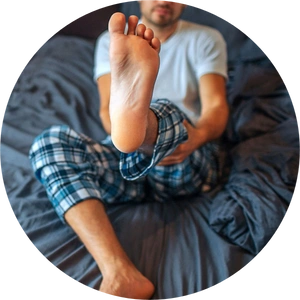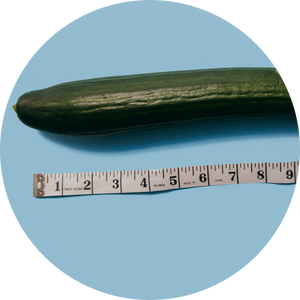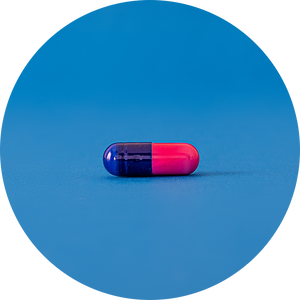You’ve probably heard of joint pain in the fingers, but what about joint pain in the toes? And even further, do you know about turf toe? We're here to provide you with a comprehensive understanding of turf toe — including its causes, symptoms, and treatment options?
What is Turf Toe?
Turf toe is a common injury primarily affecting the metatarsophalangeal joint – the joint at the base of your big toe. It has earned the name "turf toe" because it is frequently observed in athletes, particularly those who play on artificial turf surfaces.
Turf toe typically affects athletes, especially those who play sports involving running, jumping, and quick direction changes. It's common in sports like football, soccer, basketball, and track and field, particularly on artificial turf or hard surfaces. However, it can happen to anyone who hyperextends their big toe, not just athletes.
The Mechanism of Turf Toe
Turf toe is essentially a sprain of the ligaments that connect the metatarsal bone to the phalangeal bone in your big toe. This injury typically occurs when your toe is suddenly hyperextended, leading to damage to the ligaments. The result? Pain, swelling, and limited mobility in the affected joint.
Common Causes of Turf Toe
Understanding the causes of turf toe is essential for prevention and management. Here are the key factors that contribute to the development of turf toe:
-
Trauma. The most common cause of turf toe is direct trauma to the big toe. This can occur during activities such as running, jumping, or even tackling in sports. When the toe is forced into an extreme position, the ligaments can stretch or tear.
-
Inadequate footwear. Ill-fitting or unsupportive footwear can contribute to turf toe. Shoes that lack proper arch support or don't adequately protect the toes can increase the risk of injury.
-
Type of playing surface. The type of playing surface can play a significant role in the occurrence of turf toe. Artificial turf, due to its firmness, creates more resistance and force during sudden stops or directional changes, increasing the likelihood of hyperextension injuries.
-
Biomechanical factors. Individual factors such as foot anatomy and biomechanics can also influence the risk of turf toe. People with high arches or those who overpronate may be more susceptible.
-
Improper technique. Poor athletic techniques or improper body mechanics, especially during high-impact sports, can put excessive stress on the big toe joint, increasing the risk of injury.
-
Fatigue. Muscular fatigue, particularly in the lower extremities, can reduce stability and increase the likelihood of toe hyperextension.
Turf Toe Symptoms
If you suspect you might be dealing with turf toe, recognizing its symptoms is crucial. Here's a more in-depth look at the common symptoms:
-
Persistent pain. The hallmark symptom of turf toe is persistent pain. This pain can vary from sharp and shooting to a constant, dull ache. It's typically centered at the base of the big toe and intensifies during movements.
-
Swelling and bruising. The injured area tends to swell and may even bruise. The swelling can be substantial, affecting your ability to wear regular shoes and causing discomfort.
-
Limited range of motion. Your big toe may exhibit restricted movement. You might find it challenging to bend or extend your toe as you normally would.
-
Weakness and instability. Turf toe can result in a feeling of weakness and instability in the affected joint. This can affect your balance and overall mobility.
How Long Does Turf Toe Last?
The time in which it takes to recover from turf toe can vary significantly based on the injury's severity and the effectiveness of the treatment.
In mild cases, where the ligaments around the big toe joint are only slightly stretched or strained, recovery may take as little as a few weeks. Rest, icing, compression, and elevation (RICE) are often recommended during the initial stages of healing. Over-the-counter pain relievers and taping the toe for support can also be helpful.
Moderate cases of turf toe, which involve more significant ligament damage, might require several weeks to a few months for recovery. In such instances, healthcare professionals may prescribe physical therapy or recommend the use of a stiff-soled shoe or orthotic devices to limit movement and reduce strain on the injured toe.
Severe cases of turf toe, where there is a complete rupture of ligaments or other complications, can take several months to heal fully. These cases may necessitate more aggressive treatments, such as immobilization with a walking boot or, in some cases, surgery to repair the damaged ligaments.
It's crucial to follow the guidance of a healthcare professional and adhere to the prescribed treatment plan to ensure a full and timely recovery. Neglecting turf toe or returning to strenuous activities too soon can lead to chronic pain and potentially long-lasting limitations in the affected joint.
Treatments and Solutions for Turf Toe
Now, let's explore in more depth the various solutions available to address turf toe and its symptoms:
-
Rest and immobilization. The most fundamental step in healing turf toe is to rest the affected foot. Avoid any activities that put stress on the joint. Immobilization, such as using a splint or a brace, can provide stability and support.
-
Icing. Applying ice to the injured area is an effective way to reduce swelling and alleviate pain. Use a cloth or towel as a barrier between the ice and your skin to avoid frostbite.
-
Anti-inflammatory medication. Over-the-counter non-steroidal anti-inflammatory drugs (NSAIDs) like ibuprofen can help manage pain and inflammation. Always follow the recommended dosage.
-
Physical therapy. In more severe cases of turf toe, physical therapy can be beneficial. A physical therapist can guide you through exercises to strengthen the surrounding muscles, improve range of motion, and enhance stability.
-
Taping. Taping your big toe to limit movement and provide support can be particularly helpful during the initial stages of recovery.
-
Custom orthotics. Custom or over-the-counter shoe inserts can provide additional support and stability to your foot. They may help redistribute pressure away from the affected joint.
-
Steroid injections. In some cases, a healthcare professional may recommend a corticosteroid injection to reduce inflammation and relieve pain. These should be administered by a medical expert.
-
Surgical intervention: Surgery is typically reserved for severe cases or if the injury does not respond to other treatments. Surgical options may include ligament repair or fusion of the joint.
When to Seek Medical Advice for Turf Toe
Understanding the symptoms and solutions for turf toe is vital for effective management and recovery, particularly for athletes and those who are especially active. If you're experiencing any of the symptoms mentioned above or have doubts about your condition, it's essential to consult a healthcare professional for an accurate diagnosis and personalized treatment plan.
At our parent company LifeMD, board-certified doctors and nurse practitioners are just a virtual appointment away and ready to provide personalized guidance. You can conveniently schedule an appointment from the comfort of your home and take the first step toward addressing your turf toe symptoms.
How to Prevent Turf Toe in the First Place
Treating turf toe is certainly important, but what about preventing it from happening altogether? Here are some tips to help avoid this painful condition:
-
Wear proper footwear. Invest in high-quality athletic shoes with adequate toe support and a stiff sole. Choose footwear that fits well and provides stability, especially if you're participating in sports on turf surfaces.
-
Opt for orthotic inserts. Consider using orthotic inserts or custom-made insoles that provide extra arch and toe support, reducing the risk of excessive joint hyperextension.
-
Focus on your technique. Pay attention to your sports or activity technique. Focus on maintaining good balance and posture to reduce the strain on your big toe joint during abrupt stops and changes in direction.
-
Prioritize strength and flexibility. Regularly engage in exercises that improve the strength and flexibility of your lower extremities, including the toes, ankles, and calf muscles. Strong, flexible muscles and tendons can better withstand stress.
-
Warm up and cool down. Always warm up and cool down before and after physical activities to prepare your muscles and joints for action and prevent sudden stress on the big toe joint.
-
Be mindful of your training surface. If possible, opt for natural grass over artificial turf to reduce the risk of toe injuries. If you must play on artificial turf, consider wearing extra protective gear.
-
Tape your foot. In high-risk situations, taping your big toe for added support can be beneficial. Consult with a sports medicine professional or athletic trainer for guidance on the proper taping technique.
-
Don’t forget to rest and recover. Allow your body to recover adequately between strenuous activities. Overuse and fatigue can increase the likelihood of injury, so listen to your body and give it the rest it needs.
By incorporating these strategies into your routine, you can reduce the risk of turf toe and enjoy a more active and injury-free lifestyle.












